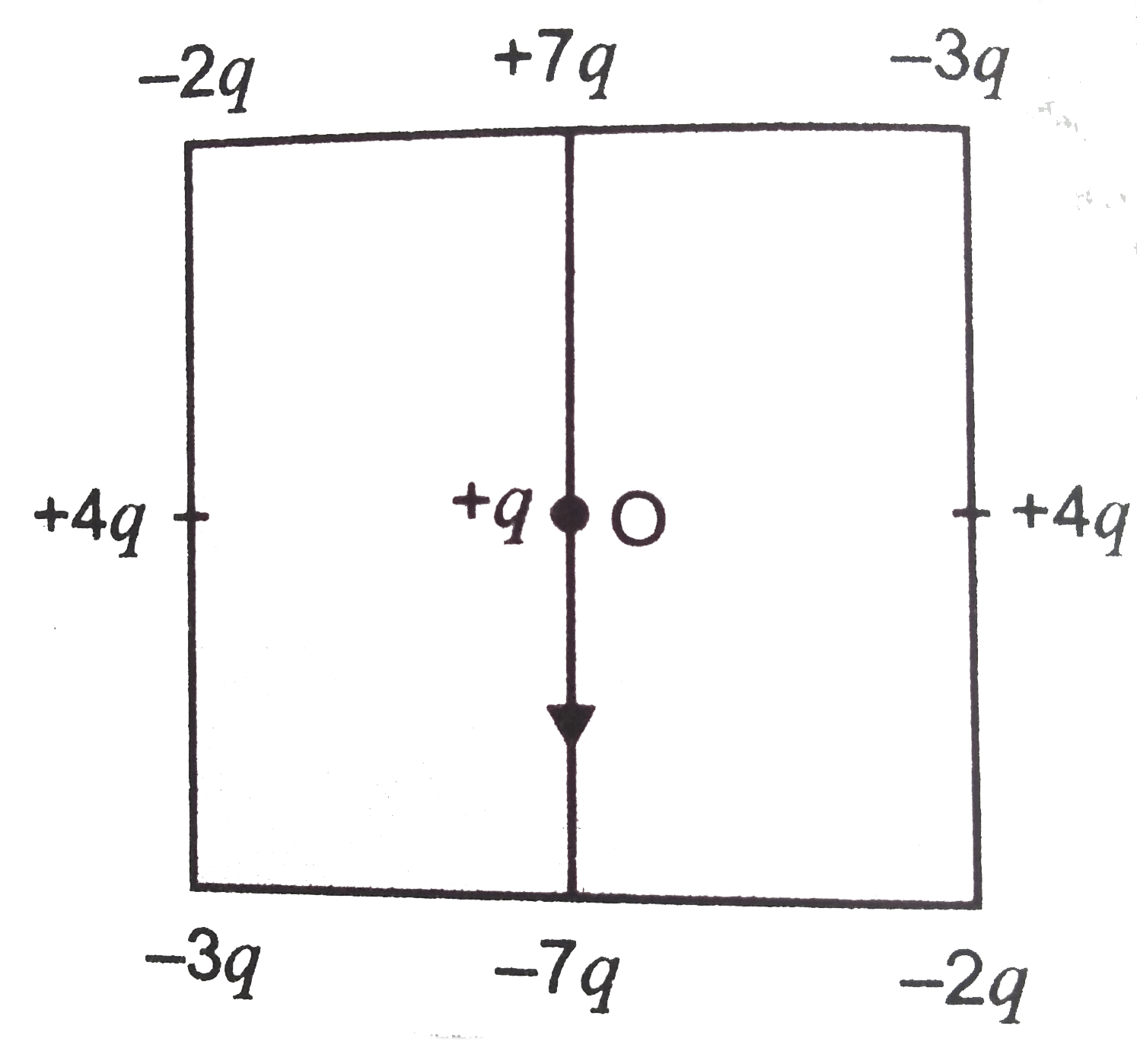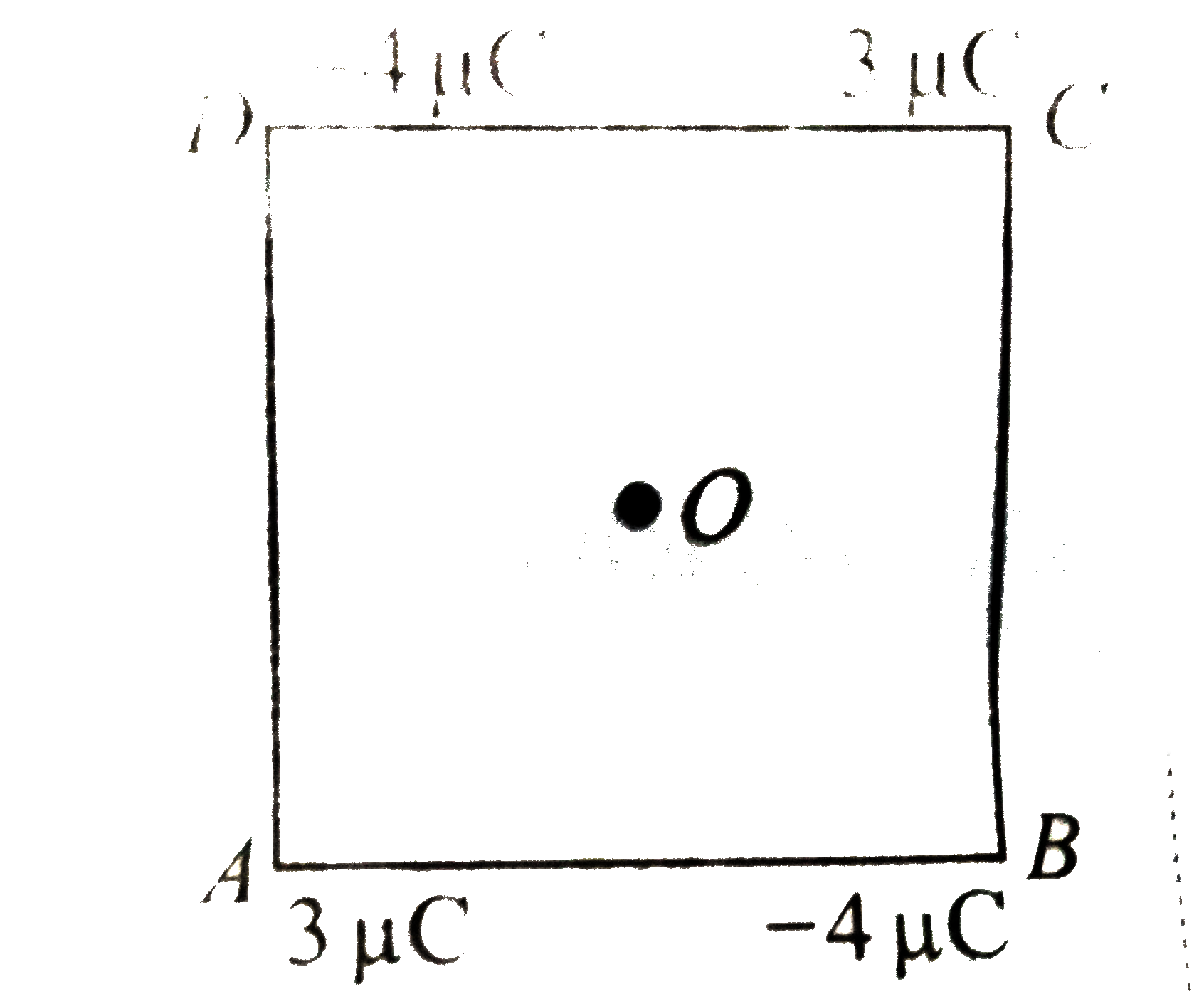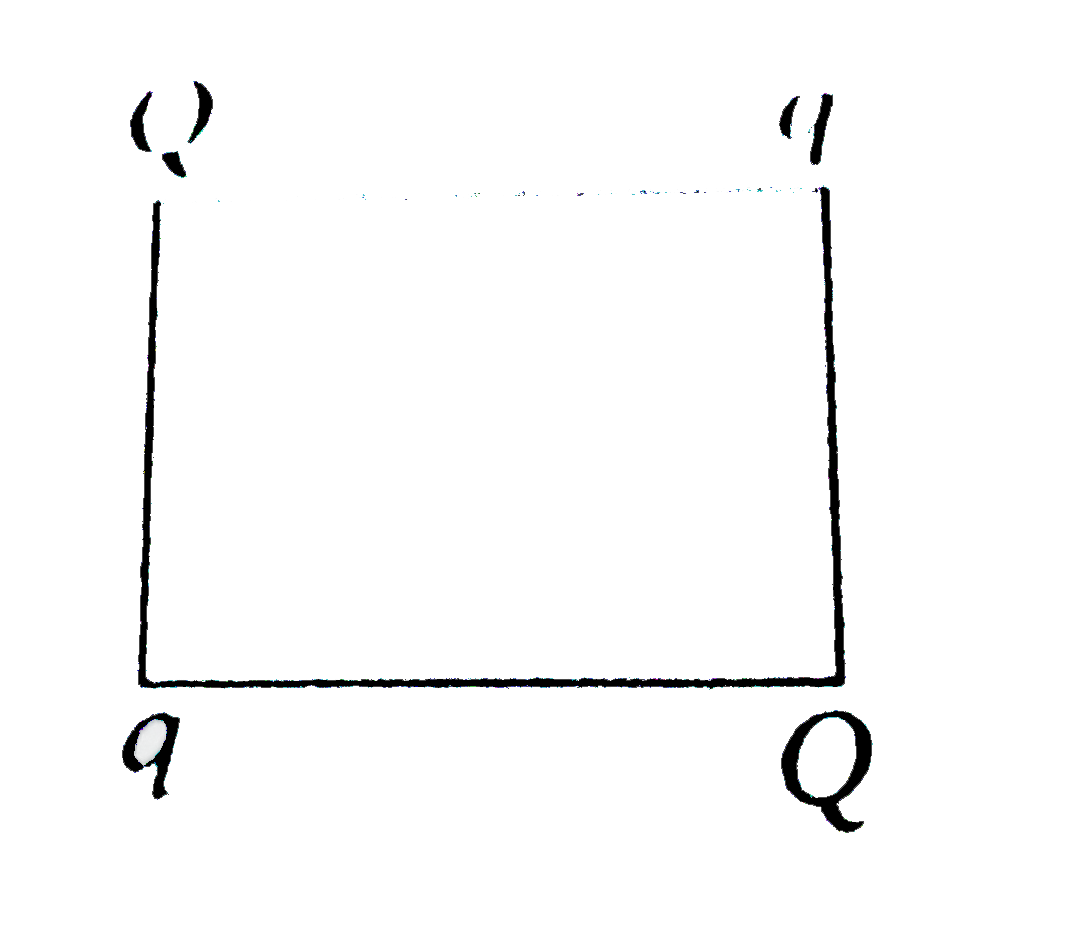A particle carrying charge + q is held at the center of a square of each side arranged on the square as shown in Fig. If q = 2 muC, what is the net force on the particle?

36×14×4×10−3N
16×14×4×10−3N
26×14×4×10−3N
6×14×4×10−3N
The correct Answer is:A
As in clear from Fig. I(a)., forces on the particle at O due to (−2q,−2q),(−3q,−3q)and(+4q,+4q) are equal and opposite They cancel out in pairs. However, forces due to +7 q add up. There, net force on the particle at O is
F=14π∈o×(7q)(q)+7q(q)(1/2)2
= 9×109×14(2×10−6)21/4
=36×14×4×10−3N
Similar Questions
Four point charges are placed at the corners of a square ABCD of side 10 cm, as shown in figure. The force on a charge of 1μC placed at the centre of square is
 View Solution
View SolutionFour point charges Q , q Q and q are placed at the corners of a square of side 'a' as shown in the Fig. Find the
resultant electric force on a charge QView Solution
Knowledge Check
- Question 1 - Select One
The electric field at the centre of a square having equal charge q at each of the coner (side of square a )
A8kqa2B2kqa2CzeroD4kq(a/√2)2 - Question 2 - Select One
Four particles, each of mass m and charge q, are held at the vertices of a square of side 'a'. They are released at t = 0 and move under mutual repulsive forces speed of any particle when its distance from the centre of square doubles is
A[14π∈0q2ma(1+12√2)]12B(14π∈0q2ma)12C[14π∈02q2ma2(1+12√2)]12D(14π∈0q2ma2)12 - Question 3 - Select One
Two charges, each equal to q, are kept at x=−a and x=a on the x-axis. A particle of mass m and charge q0=q2 is placed at the origin. If charge q0 is given a small displacement (y<<a) along the y-axis, the net force acting on the particle is proportional to
A(a) yB(b) −yC(c) 1yD(d) −1y
Calcualte the magnetic field at the center of a square conductor carrying a current of 1A. The square is 10 cm on each side.
View SolutionFour charge Q,q,Q and q are kept at the four corners of a square as shown below. What is the relation between Q and q, so that the net force on a charge q is zero ?
 View Solution
View SolutionFour point charges Q , q Q and q are placed at the corners of a square of side 'a' as shown in the Fig. Find the
potential energy of this system .View SolutionFour charges +q,+2q,+3q and +4q are placed at the four corners ABCD of a square of side a. Calculate the field and potential at the centre of the square.
View SolutionFour idential charges each of charge q are placed at the corners of a square .Then at the centre of the square the resultant electric intensity E and the net electric potential V are
View Solution

